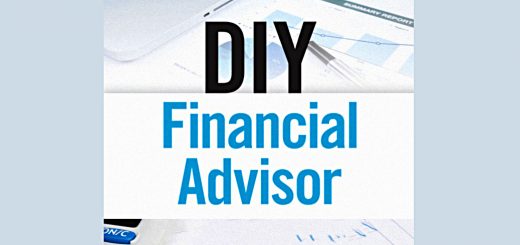The DIY Financial Advisor 5 – Practicalities

Today’s post is our fifth visit to the book – The DIY Financial Advisor (from the team at Alpha Architect).
DIY Financial Advisor
DIY Financial Advisor is a book from the team at Alpha Architect, an asset manager and a consultancy to family offices.
The thesis of the book is that the DIY Investor can make long-term decisions designed to maximise risk-adjusted performance after fees and taxes.
- In contrast, the fund manager has short-term incentives which conflict with this goal.
The themes of the book are that you can do better than the “experts”, but that you need to avoid psychological traps and stick to an investing framework.
In the first part of the book, AA made a convincing case that a systematic DIY investor – armed with a model – can beat the experts:
- Experts are self interested, susceptible to the same behavioural biases as the rest of us, and rely on stories rather than facts.
Humans are prone to poor decision-making across a broad range of situations.
Systematic decision-making (which uses models) outperforms discretionary decision making (using experts).
The (erroneous) idea that experts can outperform relies on three incorrect assumptions:
- That qualitative information increases forecast accuracy.
- That more information increases forecast accuracy.
- That experience and intuition increase forecast accuracy.
Humans have three key problems:
- Inconsistency
- Overconfidence
- Reliance on stories
Part two explains the tactics that experts use to dissuade you from following an evidence-based systematic process (with low fees).
- Fear
- Greed
- Complexity and
- Relationship-building.
AA’s decision framework is called FACTS:
- Fees
- Access
- Complexity
- Taxes
- Search (costs)
In addition to this decision framework, you need to understand some portfolio management fundamentals:
- Asset allocation
- AA plumped for the Ivy 5 portfolio from Meb Faber
- I prefer The Perfect Portfolio for investors with more than £100K
- Risk management
- AA recommend protecting against downturns using moving averages and momentum.
- This is a trend following approach, which I implement via a satellite / overlay portfolio.
- Note that the MA part of the trend-following rule is also part of the original Ivy 5 solution (though AA’s enhanced ROBUST rule is not).
- Security selection
- By this, AA mean the use of factors / smart beta to achieve outperformance.
- Once again, I have a standalone portfolio for this.
Today we’ll look at the last two chapters of the book, which are about the practicalities of the DIY solution.
Mission
The first thing that a DIY investor needs to do is decide on the mission of the portfolio:
- creating wealth is different from preserving wealth
- decumulation is different from accumulation
The choice of benchmark is also interesting – using a local stock index is not a good idea.
I use three benchmarks:
- A model portfolio based around my target (not actual) asset allocations
- My target (not actual) withdrawal rate (since I am in decumulation) – which is 3.25%
- inflation
You should also include a statement on risk appetite.
- Mine would be something along the lines of “as low as possible whilst achieving the SWR target”.
The final considerations are taxes and fees – you can only spend the money that you have after these have been deducted.
Using the FACTS framework from AA, you would also consider:
- liquidity
- ease of understanding (of the underlying investment)
- search and monitoring costs
AA consider alternatives to the DIY approach, but I will only touch on these where the differences are compelling.
Enhanced Ivy 5
The basic Ivy 5 portfolio has five assets:
- US stocks
- Foreign stocks
- US Real estate
- Commodities
- US 7-10 year bonds
Each of these is swapped for cash when the current price is below the 10-month moving average.
So the basic equity allocation is 40%.
AA propose three flavours of the portfolio, with equities weighted at 40%, 60% and 80%.
- for the 60% stocks, real assets (Real Estate and Commodities) drop to 10% each
- at 80% stocks, real assets drop to 5% each, and bonds to 10%.
This means that the Enhanced Ivy 5 approach can satisfy different missions and levels of risk appetite.
- I use a similar approach in my ongoing series of articles which compare such Lazy Portfolios to a simplified version of The Perfect Portfolio.
AA also swap the vanilla market cap equity funds for equal allocations to value and momentum funds.
And they add the TMOM rule to the MA rule, allowing each rule to switch 50% of each asset class into and out of cash (technically Treasury bills, for which there is no UK equivalent).
There is also a tax management layer which is not necessary for UK investors using SIPPs and ISAs.
AA call this the DIY portfolio, and name the various flavours Balanced, Moderate and Aggressive.
- I find Balanced and Moderate confusing, especially since neither portfolio is a 50/50 allocation.
So I’ll call the three portfolios DIY-40, DIY-60 and DIY-80.
- DIY-80 has the best returns,and the best Sortino ratio
- DIY-60 has the best Sharpe ratio, and a lower max drawdown
Note that these results are without the risk management overlay.
- When that is added, returns drop slightly, but Sharpe and Sortino values rise.
- Max drawdowns are also much lower.
Practical advice
The final chapter of the book is concerned with some practical advice.
AA offer three reasons why some people will not want to be a DIY investor:
- Fear of failure
- Inertia is difficult to overcome
- Relationships (with advisors, or platforms) matter
And they offer three reasons that you might fail in the attempt:
- You don’t believe what the facts and figures tell you
- Overconfidence (in this case, trying to add value to the model)
- Wanting to be a hero (making big calls)
And that’s it – we’ve finished the book.
- I’ve really enjoyed it, and found it to be one of the most practical investing books that I’ve read.
I only wish that there was a UK equivalent.
- Smarter Investing by Tim Hale is the usual suggestion, but Tim is a buy-and-hold passive investor, which only takes you so far.
Probably the two that come closest are:
- Smart Portfolios by Rob Carver – but I know that some people find that too mathematical and too complex in general (( He’s promising a simpler book soon ))
- Idle Investor by Ed Shing
I’ll be back in a few weeks with a summary of all the lessons from the DIY Financial Advisor.
- Until next time.














